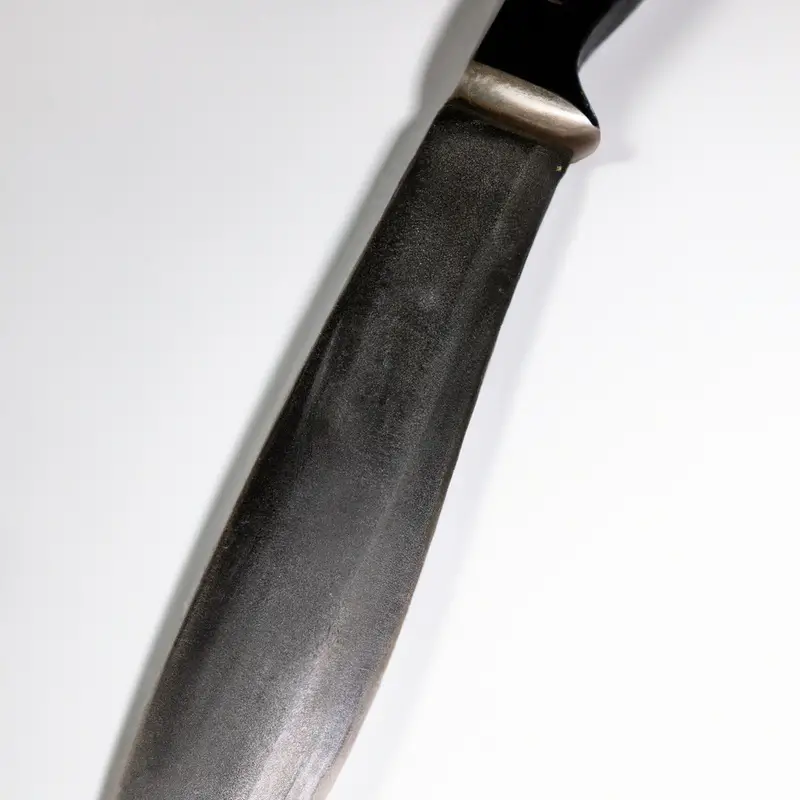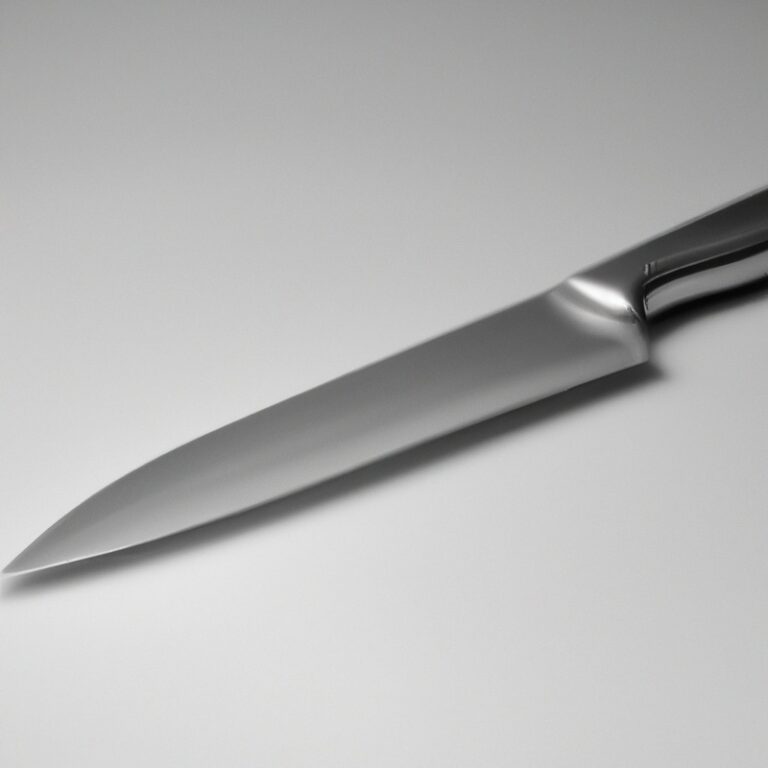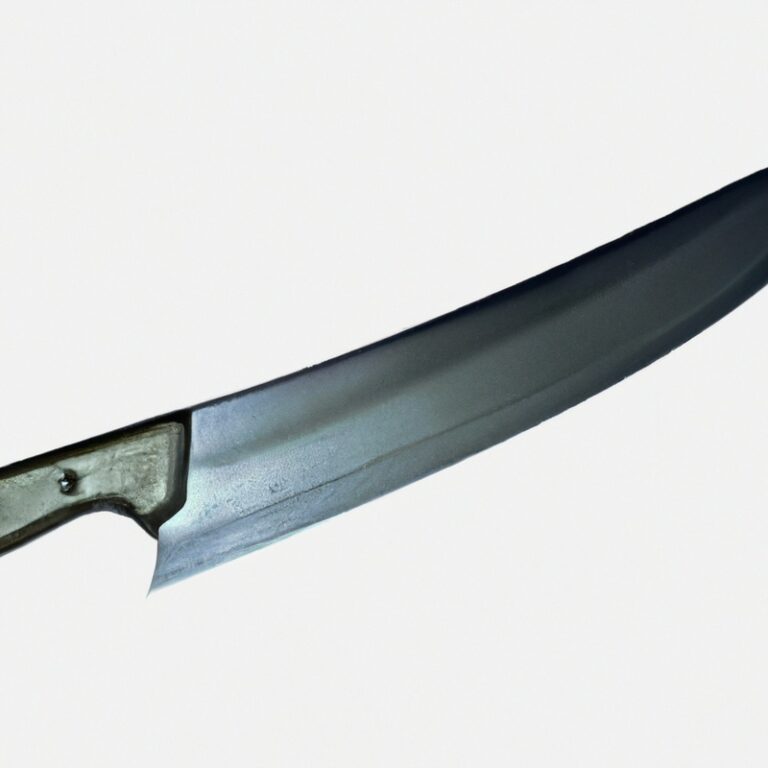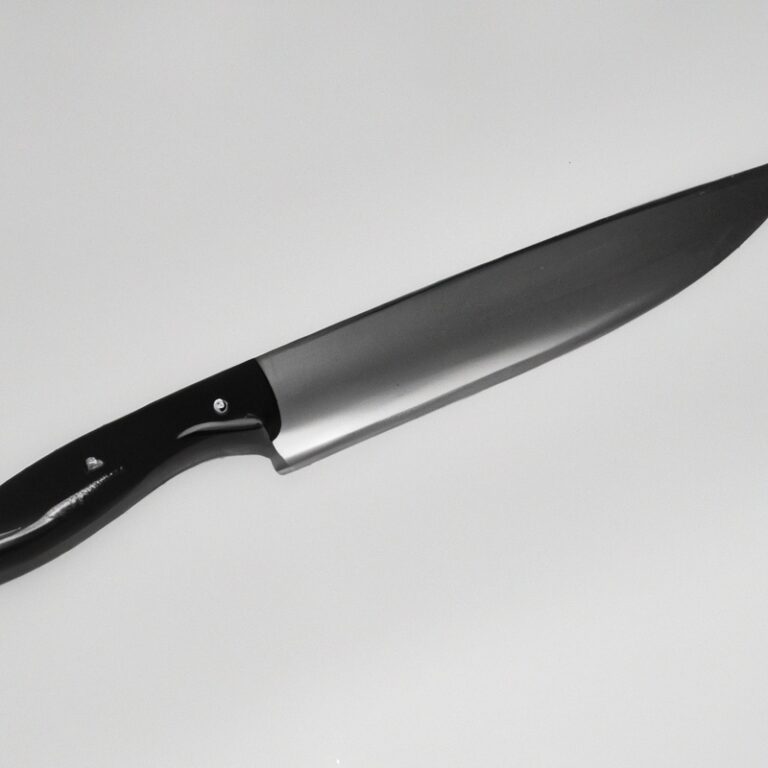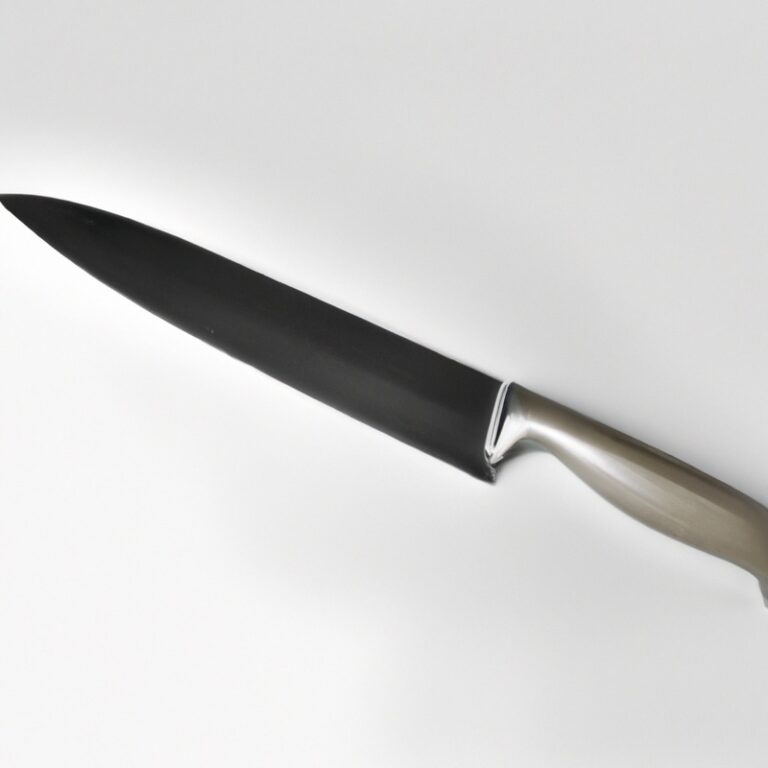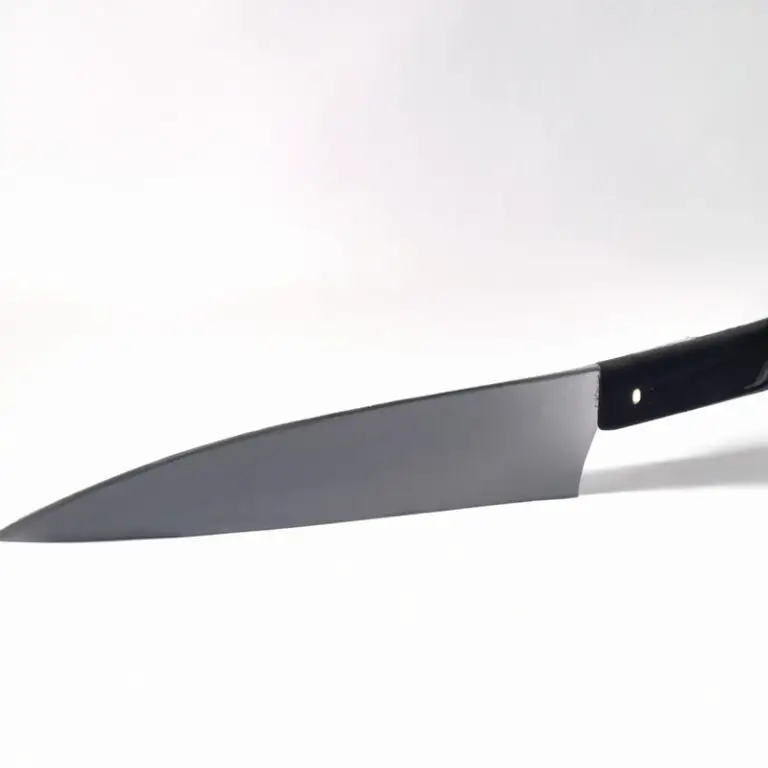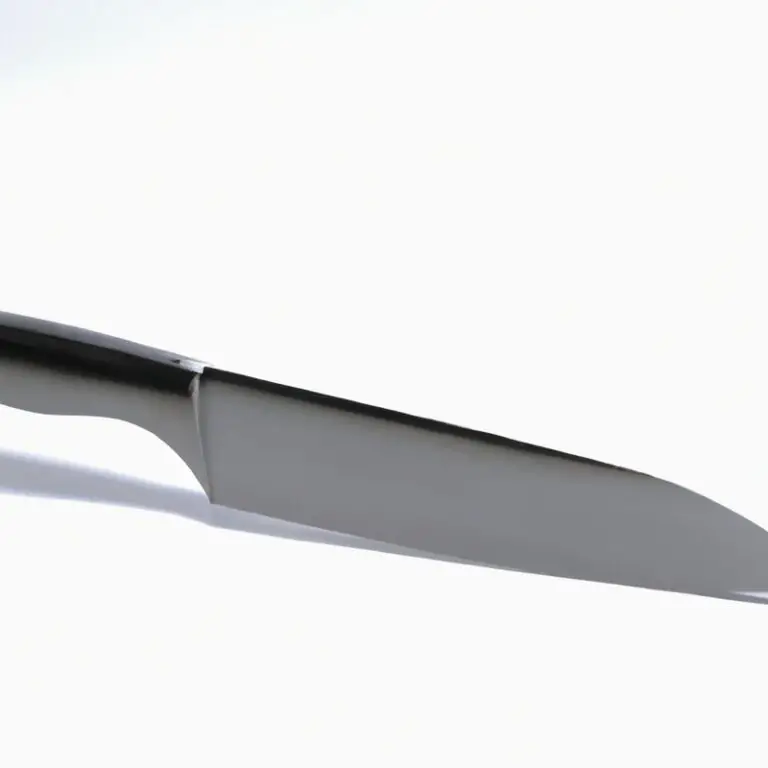How Does Knife Steel Affect Edge Retention On Serrated Knives?
Key Takeaways:
- The type of steel used in serrated knives significantly affects their edge retention.
- Different steel compositions offer varying levels of hardness, resulting in varying edge durability.
- Higher carbon content in knife steel generally leads to better edge retention for serrated knives.
- Proper care and maintenance can also contribute to preserving the edge retention of serrated knives.
Have you ever wondered why some serrated knives maintain their sharpness longer than others?
It all boils down to the type of knife steel used in their construction.
As an expert in knife craftsmanship, I’ve spent years studying the factors that impact edge retention, and trust me, the choice of knife steel plays a crucial role.
In this article, I’ll delve into the different types of steel commonly used in serrated knives, explore the correlation between knife steel microstructure and hardness, and reveal how heat treatment and blade geometry all contribute to edge retention.
So, if you want to learn how to keep your serrated knives consistently sharp, stick around!
| Knife Steel | Edge Retention on Serrated Knives |
|---|---|
| Stainless Steel | Provides good edge retention on serrated knives. It resists corrosion, which helps maintain the sharpness of the serrations. |
| High Carbon Steel | Offers excellent edge retention on serrated knives. It is a harder steel, which allows the serrations to stay sharp for longer periods. |
| Damascus Steel | Provides good edge retention on serrated knives. The multiple layers of steel contribute to the durability and sharpness of the serrations. |
| Ceramic | Offers exceptional edge retention on serrated knives. Ceramic blades are very hard, resulting in long-lasting and sharp serrations. |
Factors affecting edge retention
Different types of knife steel commonly used in serrated knives
There are several types of knife steel commonly used in serrated knives.
Here are some of the most popular ones:
- Stainless steel: This type of steel is known for its corrosion resistance and durability. It is easy to maintain and is less likely to rust or stain. However, it may not hold its edge as well as other types of steel.
- High-carbon steel: This steel offers excellent edge retention and sharpness. It is harder than stainless steel but requires more maintenance to prevent rusting.
- Damascus steel: This is a type of steel that is revered for its beautiful patterns and unique character. It is known for its exceptional strength and sharpness. However, it can be more expensive and requires special care to maintain its quality.
These are just a few examples of the knife steel options available for serrated knives.
Each type has its own advantages and considerations, so it’s important to choose the one that best fits your needs and preferences.
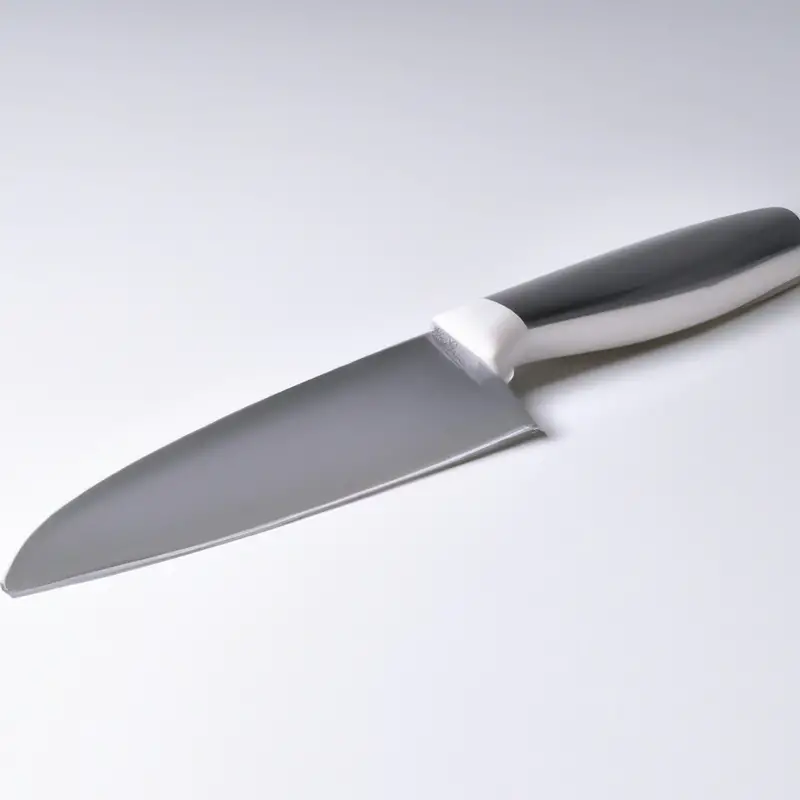
Microstructure and hardness of knife steel and its correlation to edge retention
The microstructure and hardness of knife steel play a crucial role in determining the edge retention of serrated knives. The microstructure refers to the arrangement of the steel’s grains and phases, while hardness measures its resistance to deformation.
A fine-grained microstructure with evenly dispersed carbides can enhance edge retention.
Additionally, a high hardness level ensures that the blade maintains its sharpness for longer periods. Therefore, knife steels with a well-controlled microstructure and high hardness tend to have better edge retention capabilities.
Heat treatment and its role in edge retention
Impact of heat treatment on the hardness and toughness of the knife
The heat treatment process plays a significant role in determining the hardness and toughness of a knife. Heat treatment involves carefully heating and cooling the steel to change its internal structure.
This affects the knife’s performance and edge retention.
By controlling the heating and cooling rates and temperatures, the hardness of the steel can be increased, resulting in a sharper edge that lasts longer. At the same time, the heat treatment process also helps enhance the toughness of the steel, which ensures the knife can withstand impact and resist chipping or fracturing.
The right heat treatment can strike a balance between hardness and toughness, making the knife durable and long-lasting.
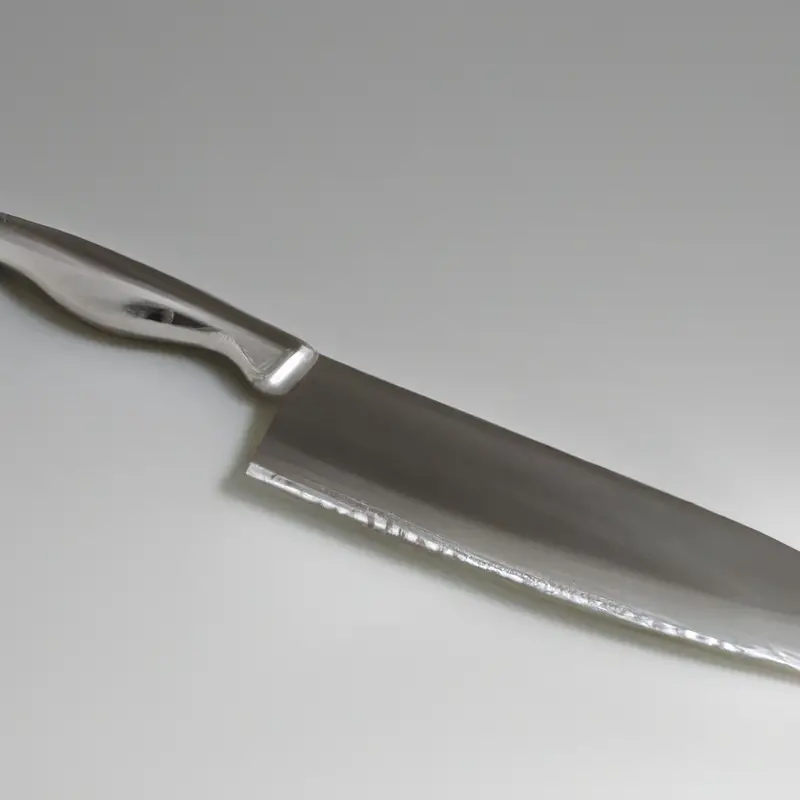
Heat treatment techniques used to optimize edge retention in serrated knives
Heat treatment techniques play a vital role in optimizing edge retention in serrated knives.
By carefully controlling the heating and cooling processes, knife manufacturers can enhance the hardness and toughness of the knife steel.
Techniques like quenching, tempering, and cryogenic treatment are commonly used.
These processes help to refine the microstructure of the steel, resulting in a blade that can resist wear and maintain its sharpness for longer periods.
Proper heat treatment ensures that your serrated knife remains effective and reliable, even with repeated use and tough cutting tasks.
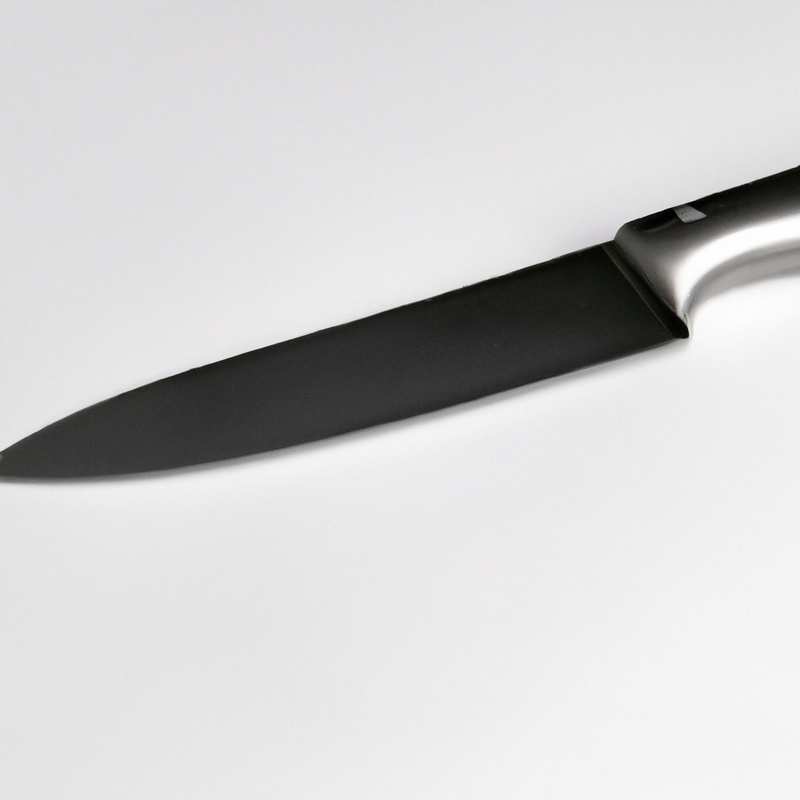
Blade geometry and its impact on edge retention
Understanding the importance of blade shape and thickness in serrated knives
The blade shape and thickness play a vital role in the performance and edge retention of serrated knives.
A serrated knife with the right blade shape and thickness can ensure efficient cutting and a longer-lasting edge.
The shape of the serrations and the spacing between them determine how effectively the knife can grip and cut through tough materials.
Additionally, the thickness of the blade affects the overall stability and durability of the knife.
By choosing a serrated knife with an appropriate blade shape and thickness, you can enhance its cutting ability and prolong its sharpness.
How proper blade geometry enhances edge retention in serrated knives
Proper blade geometry plays a key role in enhancing edge retention in serrated knives. The shape and thickness of the blade determine how well it can maintain a sharp edge over time.
In serrated knives, a thin and narrow blade with well-defined teeth allows for deeper and more precise cuts, reducing the force required to slice through materials.
This minimizes the stress on the edge, reducing the risk of dulling or chipping. Additionally, a properly shaped blade ensures that the teeth are properly aligned and spaced, optimizing their cutting efficiency and prolonging the knife’s edge retention.
Maintenance and care for maximizing edge retention
Proper sharpening techniques for serrated knives
Proper sharpening techniques for serrated knives involve a slightly different approach compared to traditional knives.
Instead of using a sharpening stone or honing rod, a serrated knife requires a specialized tool called a serrated knife sharpener.
Here are the steps to sharpen your serrated knife:
- Find a serrated knife sharpener that matches the size of the serrations on your knife.
- Gently insert the sharpener into the serrations at a slight angle, making sure to align with the beveled edge of the serrations.
- Use a back-and-forth motion to scrape the sharpener across the serrations, applying light pressure.
- Continue this motion along the entire length of the blade, ensuring each serration receives equal attention.
- Test the knife’s sharpness by carefully running your finger over the blade’s edge, being cautious to avoid injury.
How to maintain the edge and prevent premature dulling
To maintain the edge and prevent premature dulling of your serrated knife, there are a few simple steps you can follow. Firstly, always use a cutting board made of wood or plastic to avoid damaging the edge on hard surfaces.
Secondly, hand wash your knife and dry it immediately after each use to prevent moisture from causing corrosion.
Thirdly, store your knife in a protective sheath or a knife block to prevent accidental bumps or scratches. And finally, avoid using your serrated knife for tasks it wasn’t designed for, such as prying or chopping through bones.
By taking these precautions, you can keep your knife’s edge sharp and prolong its lifespan.
Best practices for cleaning and storing serrated knives
To keep your serrated knives in top-notch condition and maximize their edge retention, there are a few best practices for cleaning and storing that you should follow:
- Hand wash: Always hand wash your serrated knives in warm, soapy water immediately after use. Avoid putting them in the dishwasher, as the high heat and harsh detergent can damage the blade and handle.
- Gentle scrubbing: Use a soft sponge or cloth to gently scrub the blade, paying careful attention to the serrations. Avoid using abrasive materials or harsh scrub brushes that can potentially damage the edge.
- Dry thoroughly: After cleaning, make sure to dry the knife thoroughly with a clean towel to prevent any moisture from lingering on the blade. Moisture can lead to rust or corrosion, which can affect the edge retention.
- Proper storage: Store your serrated knives in a knife block, a knife roll, or a sheath to protect the blade from coming into contact with other metal objects. This will help prevent the serrations from getting damaged or dull.
- Avoid overcrowding: If you’re using a knife drawer for storage, make sure not to overcrowd the knives. Overcrowding can cause the blades to rub against each other, resulting in dullness or chipping of the serrations.
Comparing different knife steel types for edge retention
Analyzing the edge retention capabilities of stainless steel in serrated knives
Stainless steel is a popular choice for serrated knives due to its excellent edge retention capabilities. Its high resistance to corrosion and wear makes it a reliable option for those who want long-lasting sharpness.
The combination of chromium, carbon, and other alloying elements gives stainless steel the ability to maintain a sharp edge even after extended use.
This means you can rely on your serrated knife to effortlessly slice through tough materials without compromising on performance. Stainless steel is a smart choice if edge retention is a top priority for you.
Exploring the performance of high-carbon steel in serrated knives
High-carbon steel is known for its exceptional performance in serrated knives. Its high carbon content allows for excellent edge retention, meaning the blade stays sharp for longer periods without frequent sharpening.
Additionally, high-carbon steel offers great hardness, which enhances the durability and strength of the knife’s edge.
This type of steel is ideal for serrated knives that require long-lasting sharpness and resilience to handle tough cutting tasks. With high-carbon steel, you can rely on your serrated knife to consistently deliver precision and efficiency in your cutting endeavors.
Comparing the edge retention of other specialty knife steels in serrated knives
When comparing the edge retention of specialty knife steels in serrated knives, it’s important to consider factors such as hardness, wear resistance, and corrosion resistance.
Some popular specialty knife steels known for their edge retention capabilities in serrated knives are:
- D2 Tool Steel: Known for its high hardness and wear resistance, D2 steel can maintain a sharp edge for longer periods.
- CPM S30V: This stainless steel offers excellent edge retention due to its high carbon and vanadium content.
- M390: Recognized for its superior wear resistance, M390 steel can withstand prolonged use without significant dulling.
- VG-10: This Japanese stainless steel is known for its hardness and excellent corrosion resistance, making it ideal for serrated knives that may be exposed to moisture.
Remember, the choice of specialty knife steel depends on your specific needs and preferences.
Consider factors such as intended use, maintenance requirements, and budget when selecting the best steel for your serrated knife.
Final Verdict
The choice of knife steel plays a crucial role in determining the edge retention of serrated knives.
Factors such as microstructure, hardness, and heat treatment all contribute to the overall performance of the blade.
Additionally, blade geometry and proper maintenance are equally important in ensuring optimal edge retention.
By understanding these factors and using them to inform our purchasing decisions and care routines, we can maximize the longevity of our serrated knives.
With the right knowledge and practices, we can enjoy the benefits of sharp and durable blades for a long time.

